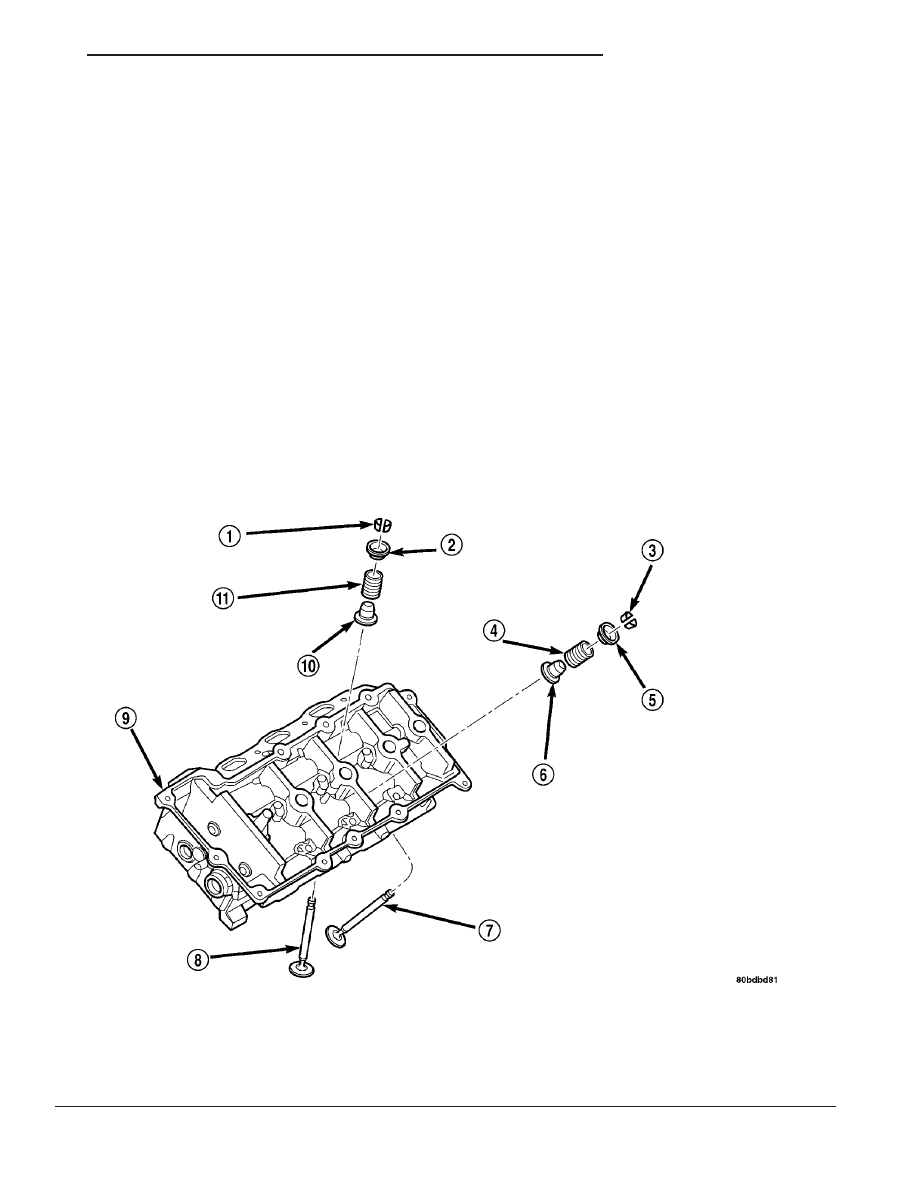Chrysler Sebring, Stratus sedan, Sebring Convertible. Manual - part 521

VALVE SPRINGS
DESCRIPTION
The valve springs are made from high strength,
chrome-silicon steel (Fig. 15). The springs are com-
mon for intake and exhaust applications. The valve
spring seat is integral with the valve stem seal,
which incorporates a garter spring to maintain con-
sistent lubrication control to the valve stem.
REMOVAL
REMOVAL - IN VEHICLE
(1) Perform fuel system pressure release procedure
before attempting any repairs. (Refer to 14 -
FUEL SYSTEM/FUEL DELIVERY - STANDARD
PROCEDURE)
(2) Disconnect negative cable from remote jumper
terminal.
(3) Remove air cleaner housing and inlet hose.
(4) Remove upper intake manifold. (Refer to 9 -
ENGINE/MANIFOLDS/INTAKE
MANIFOLD
-
REMOVAL)
(5) Remove cylinder head covers. (Refer to 9 -
ENGINE/CYLINDER
HEAD/CYLINDER
HEAD
COVER(S) - REMOVAL)
(6) Remove crankshaft vibration damper (Refer to
9
-
ENGINE/ENGINE
BLOCK/VIBRATION
DAMPER - REMOVAL), timing chain cover (Refer to
9
-
ENGINE/VALVE
TIMING/TIMING
BELT
/
CHAIN COVER(S) - REMOVAL), and timing chain
(Refer to 9 - ENGINE/VALVE TIMING/TIMING
BELT/CHAIN AND SPROCKETS - REMOVAL).
(7) Remove camshafts and rocker arms. (Refer to 9
-
ENGINE/CYLINDER
HEAD/CAMSHAFT(S)
-
REMOVAL)
(8) With air hose attached to spark plug adapter
installed in the cylinder being serviced, apply 620.5–
689 kPa (90–100 psi) air pressure. This is to hold
valves in place while servicing components.
Fig. 38 VALVE, SPRING SEAT/SEAL, SPRING, REATINER AND LOCKS
1 - VALVE KEEPER
7 - VALVE-EXHAUST
2 - SPRING RETAINER
8 - VALVE-INTAKE
3 - VALVE KEEPER
9 - CYLINDER HEAD
4 - VALVE SPRING-EXHAUST
10 - VALVE STEM SEAL
5 - SPRING RETAINER
11 - VALVE SPRING-INTAKE
6 - VALVE STEM SEAL
JR
ENGINE 2.7L DOHC
9 - 187